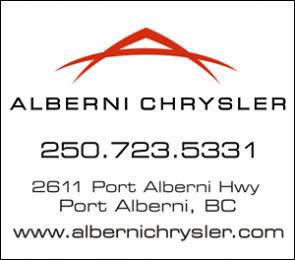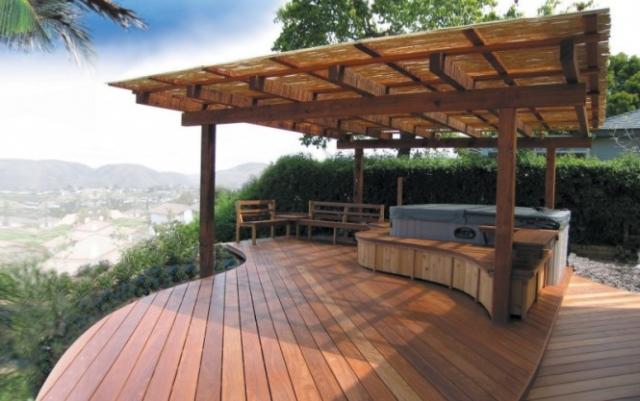

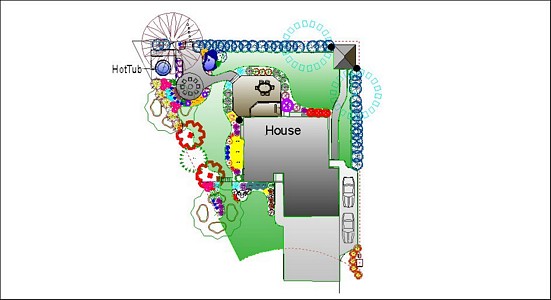
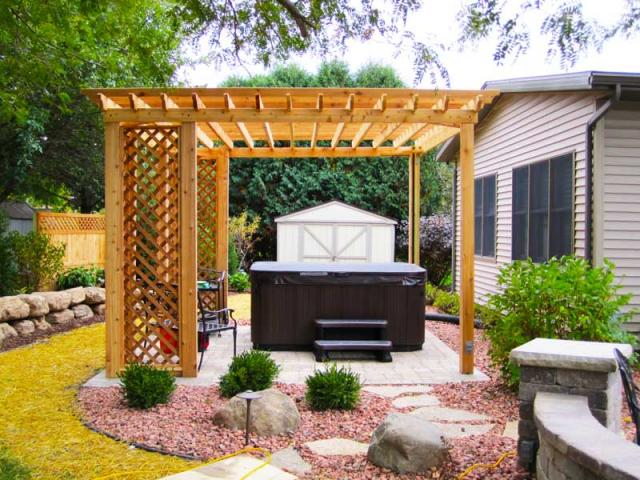
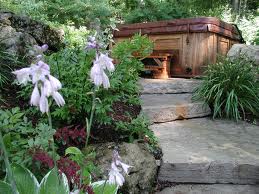
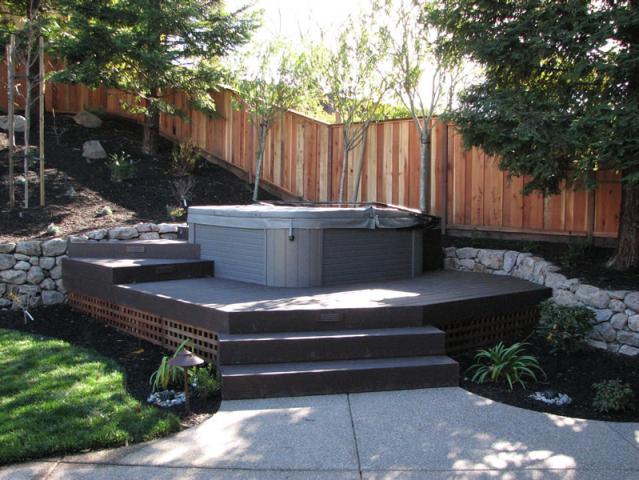
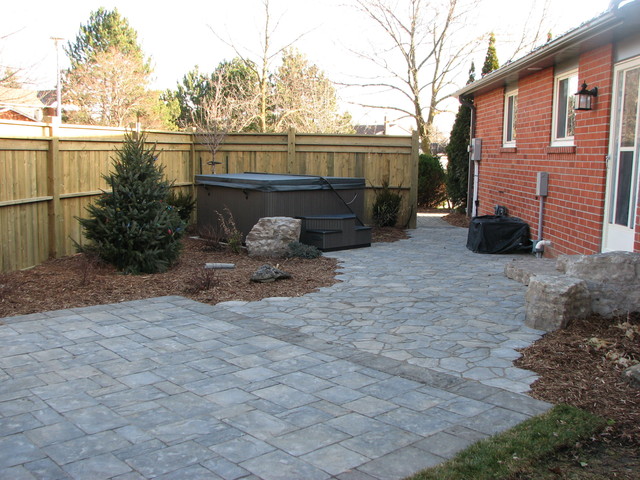

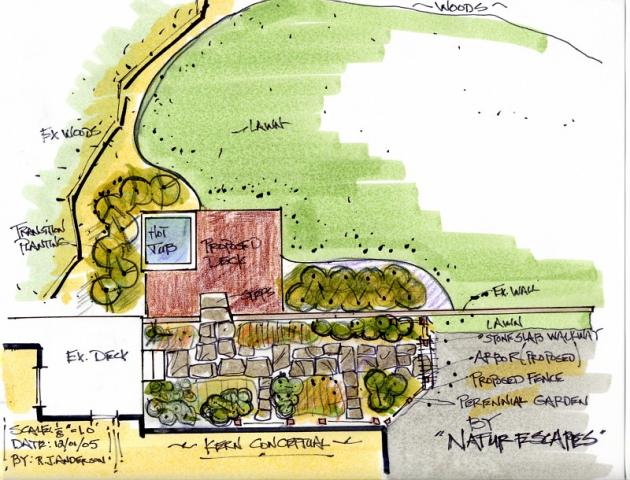

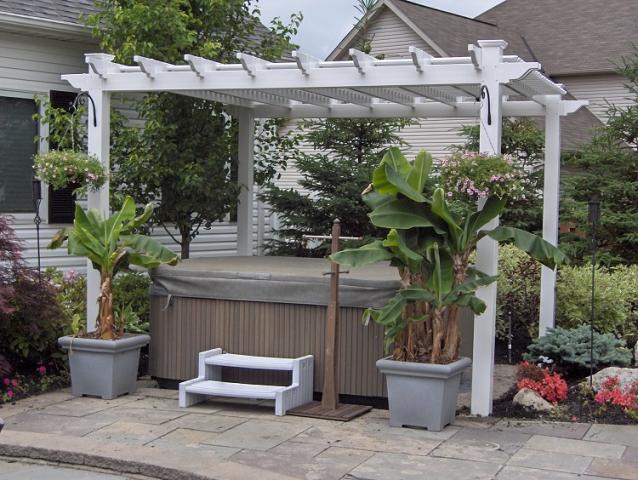
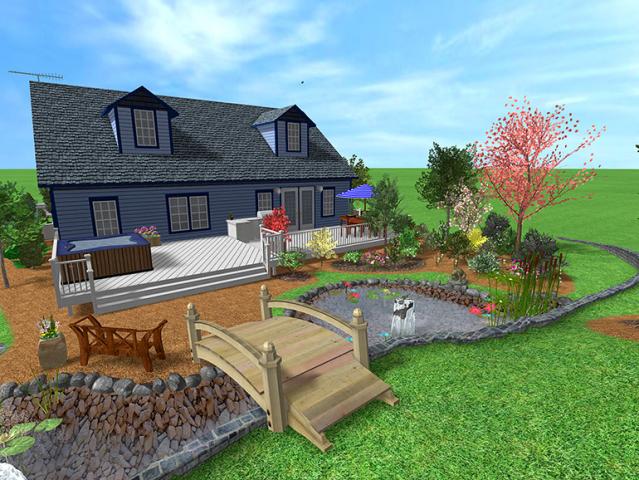

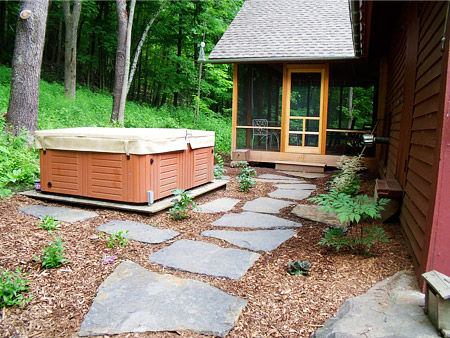


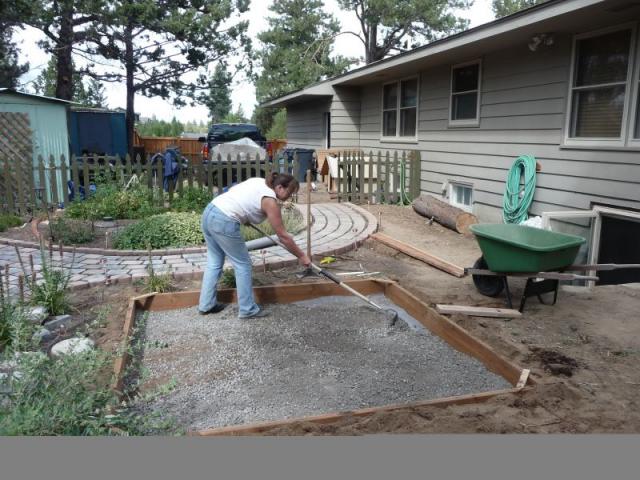
Some helpful tips…
The direction that your spa will be facing will contribute to your overall bathing experience, so select the spa location that will provide optimal views based on your property layout. Consider your lifestyle and where you want to enjoy your spa and situate it accordingly. A nearby place for you and your guests to change clothes is a huge convenience. You may also want to consider an outdoor shower. Also, a location near a house entry is convenient in areas with extreme winter climates.
o Avoid selecting a site where excessive water may contact the spa, such as sprinklers or a roof edge without rain gutters.
o Avoid areas of direct, prolonged sunlight if possible, or consider a gazebo, or spa umbrella. With continued exposure to the elements, fading or damage may occur to your spa cover and cabinet.
o Prevent dirt, sand, and foliage from being tracked into your spa by utilizing concrete, concrete pavers, or stone for paths and access areas (or, avoid positioning your spa in an area where debris will be tracked into the spa). Check the location of trees and spill paths from gutters to determine if wind or rain will sweep debris into your spa.
o Consider your view and your privacy during all seasons of the year so your experience in your outdoor spa will be enhanced rather than limited. NOTE: Typical outdoor surfaces include, but are not limited to concrete, brick, non-slip tile, wood decking, pea gravel, or sand.
Service Access: Some people choose to install tile or custom wood around their spas. If you are installing your spa with custom trimming, remember to allow access for service. Should your spa need service, a technician will probably need to remove the spa’s equipment compartment door or side panels. Also, it is always best to design special installations so the spa can still be moved, or lifted from the ground.
Access to Circuit Breakers: For service purposes, allow easy access to the circuit breakers in the electrical service panel (permanently-connected models), or to the interrupter switch on the end of the power cord (cord-connected models).
Electrical Safety Requirements: When considering the location for your spa, consult with a licensed electrician. Knowing before hand where conduit will be laid will help when laying out your patio, etc. The installation of all spas must be in accordance with national and local wiring rules. Always have a licensed electrician perform the electrical installation. Improper wiring may prevent the spa from operating safely which could result in electrical shock, injury, or death. Improper wiring could also lead to a malfunction of the spa’s equipment, void of warranty, and risk of fire.
Water Drainage: Avoid installing the spa in a pit or low area where water may accumulate and damage the spa or its equipment. Choose a site where water will drain away from the spa. Your spa contains an equipment compartment, which houses all of its electrical components. Allowing water into the equipment compartment can damage the electronics, or may result in tripping your spa’s circuit breaker. For 120V~/60Hz, cord-connected spas, avoid plugging your spa into an electrical outlet that is susceptible to water. Likewise, avoid positioning the spa’s electrical cord as to allow water to enter the cord’s interrupter switch.
Use of a Cover-Lifting Mechanism: If using a cover-lifting mechanism, allow up to 24” (.61m) of clearance behind the spa. Check with your authorized Coast Spa dealer for the exact clearance requirements for the cover-lifting mechanism
The Foundation
General Guidelines: Select a structurally sound flat surface that is reasonably level to serve as your spa’s foundation. A foundation that shifts or settles may cause stress to the spa shell. The foundation that your spa rests on must have a weight bearing load capability of supporting the weight of your spa, its water, and the people using it. The maximum filled weight of a spa can be as much as 6,000 lbs (2,722 kg), plus the weight of the occupants that use the spa. If your spa’s pad is slightly sloped it will not affect the performance of the spa or its structure, however, there should be no dips, sags, or unevenness in the pad. Most patios are built to slope away from the house for drainage purposes. There should be no more than a ½” (1.27cm) slope in an 8‘(2.44m) run. Recommended flooring materials include a concrete pad, concrete pavers or bricks, pea gravel, or crushed rock (1.5” [3.81cm] or less), or a reinforced deck.
WARNING: To prevent serious damage to your spa, it is important that the spa foundation be supported by a flat, stable, and consistent subsurface.
WARNING: Because your spa pad must provide continuous support for the entire base of the spa, you should never level it with shims. If it is necessary to level your spa, make sure the entire spa’s structure is fully supported, both in the center as well as the outer edge. When leveling your spa, there should be no voids beneath it. Structural damage to the spa resulting from incorrect installation, placement on an inadequate foundation, or improper leveling will void the spa’s warranty.
CAUTION: Consult a qualified Structural Engineer or Contractor before the spa is placed on an elevated structure or deck.
Elevated Installations: Be certain your deck or elevated structure can support the maximum filled weight of your spa along with the total weight of occupants that use it. You must know the deck’s weight-bearing load capacity and ensure that it is greater than the maximum filled weight of your spa combined with the occupants using it or serious injury or structural damage could result. To find the weight bearing load requirement along with the maximum filled weight of your spa, refer to the Spa Technical Specifications Chart or contact an authorized Coast Spa dealer.
Design Considerations
Hard-Surface Options (Decking and Flooring): In addition to selecting a hard surface that meets the recommended safety and maintenance criteria, consider textures and colors that will assist in enhancing the aesthetics of the area in which your spa will be installed. The decision to match, contrast, or blend the hard surface colors and textures with those of your spa should only be made after carefully researching your options. The cost of a Landscape Architect may be money well spent.
Surrounding Landscape: The correct landscape around your spa will not only soften the adjacent hard surface areas, but will add life and much enjoyment to the environment. If the budget allows, you may want to consult with a Landscape Architect for expert advice.
Spa-Side Accessories: Besides selecting the correct hard surfaces and landscape around your spa, the addition of the proper spa-side accessories will provide just the finishing touch that you are looking for. Spa steps, benches, towel racks, planter boxes, or an outdoor fireplace are just a few of the items that can be considered when accessorizing your spa.




